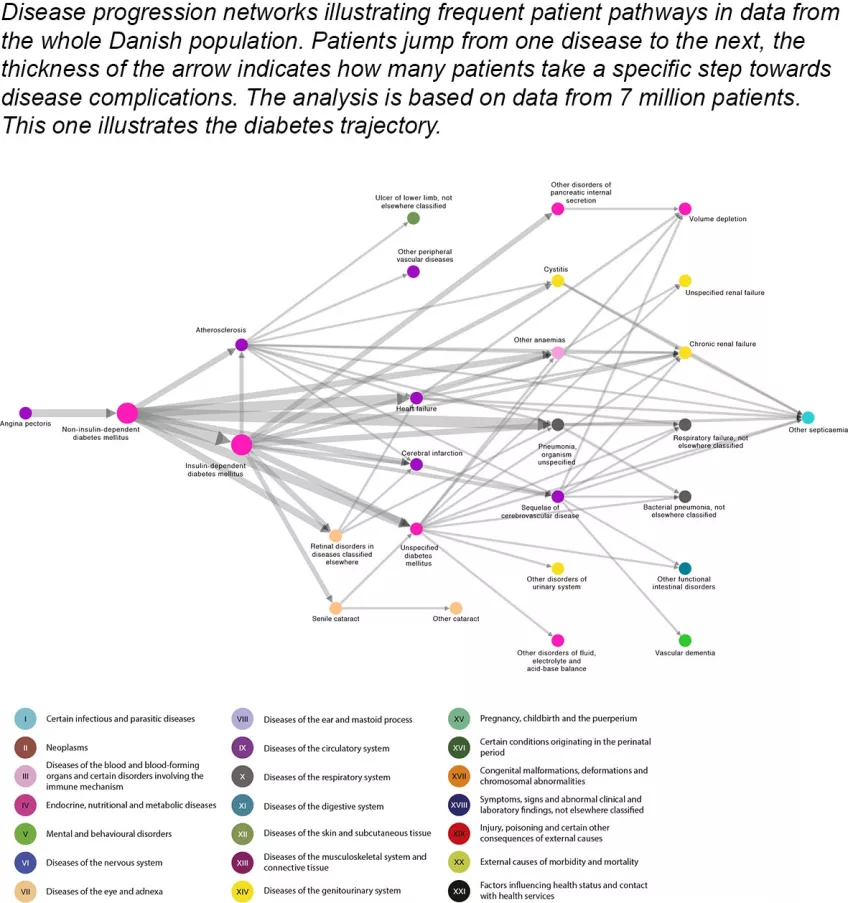In simple terms, it can be said that Søren Brunak has made it possible to study the development of several million people’s disease trajectories over time. In this way he charts how different diseases are connected to each other. The basis for the research is an enormous volume of data from various registers and patient records.
“Two patients can receive the same diagnosis from healthcare, for example breast cancer, but they are different from each other in many ways. They have different lab results, gene composition, protein concentrations and prognoses. We combine all such available data, called phenotypic data, from different patient databases and also include socioeconomic factors, because it’s not only the genes that increase your risk of developing a disease”, explains Søren Brunak.
Disease trajectories
The research opens up possibilities to attain improved precision in the classification of patients based on which direction they are heading. Søren Brunak takes diabetes as an example: some people’s disease progression is faster and they need insulin earlier than those with a slower progression.
“Which factors speed up or slow down disease progression? Why do some people become blind, but not others? Is it due to gene variation or lifestyle? These are the type of questions we are trying to answer in the research.”
It sounds simple in theory: set the computers the task of learning how to detect patterns among millions of patients. However, collecting information on up to 10 million people generates an enormous volume of data and potential disease progressions. Søren Brunak mentions the thought experiment of having grains of rice on a chess board and doubling the number of rice grains for each successive square. From 1 till 2, from 2 to 4 and so on. By the time you get to the 64th square, you have around 18 trillion grains of rice.
This is roughly what happens when you collect data on so many people and consider in how many ways you can jump around.
Looking at the whole spectra
However, solving the puzzle is an almost inhuman task. It is here that the potential of machine learning, smart algorithms and advanced computers come in. The hope is that the research Søren Brunak is conducting can help to find the clues that can be developed into better diagnosis methods and new treatments, and reduce unnecessary treatment.
“To a certain extent, the development of new medicines had been idealised in the way that the approach has been one disease at a time. In reality, patients have many chronic diseases stacked on each other; dementia, diabetes, cancer – which complicates treatment.”
“A big smile on my face”
Søren Brunak had just given a speech at a conference on the Danish Blood Donor Study, when he realised that he had missed several calls on his phone. It was the awards committee that had been trying to reach him.
“After the conversation, I had a very big smile on my face during dinner, even though it was not possible to say why to the people at my table. I feel honoured to receive the prize”, says Søren Brunak.
Text: Tove Smeds



